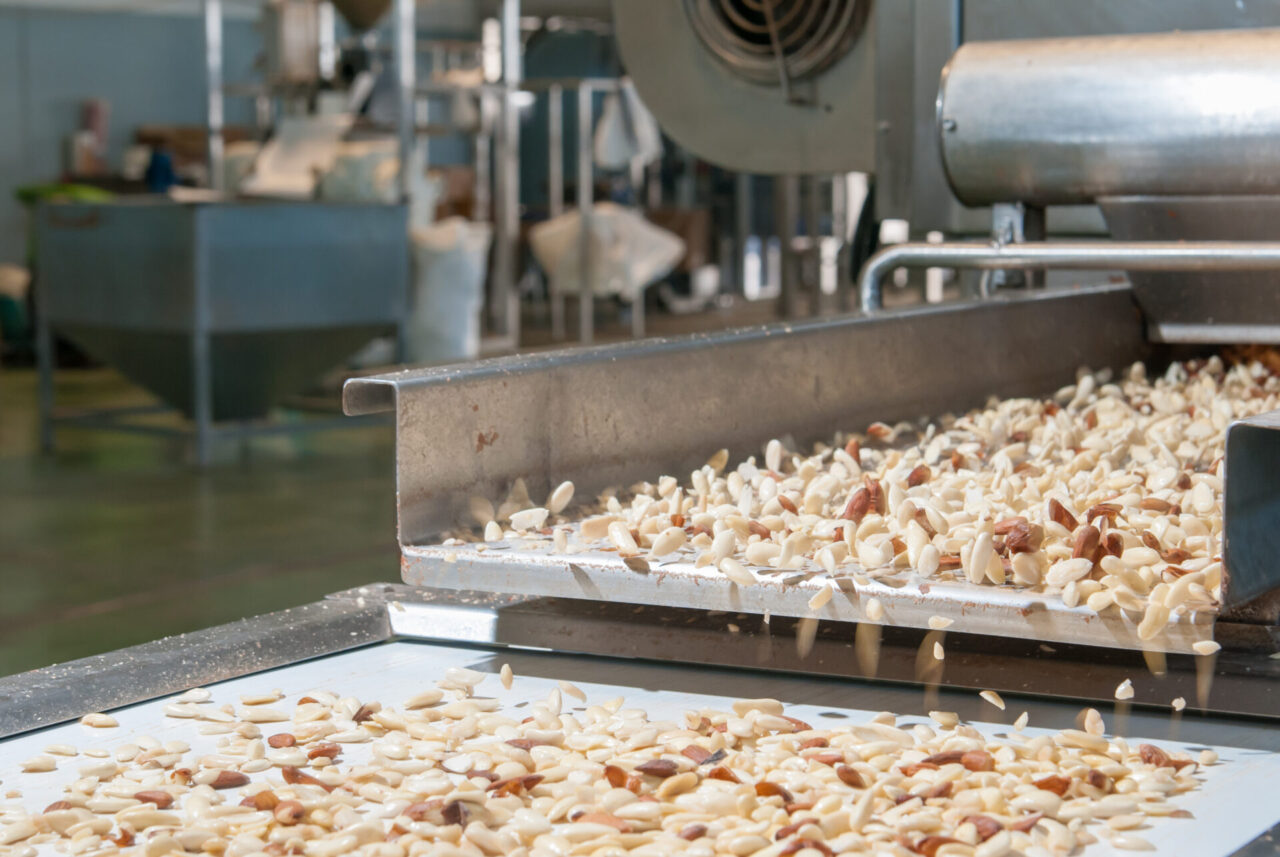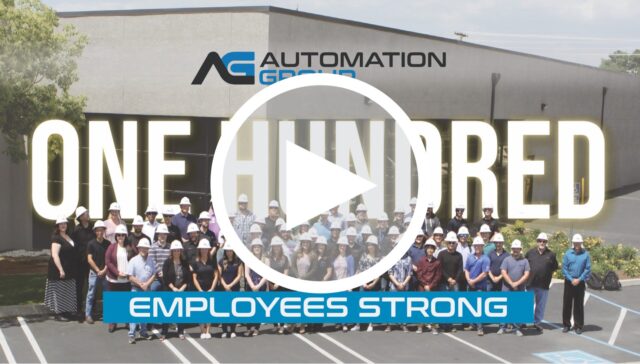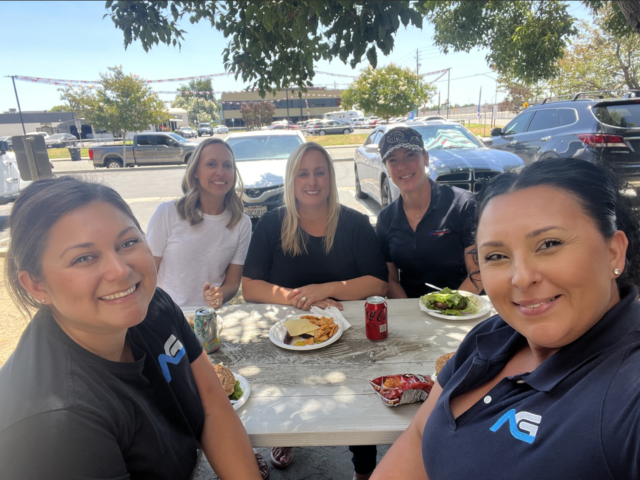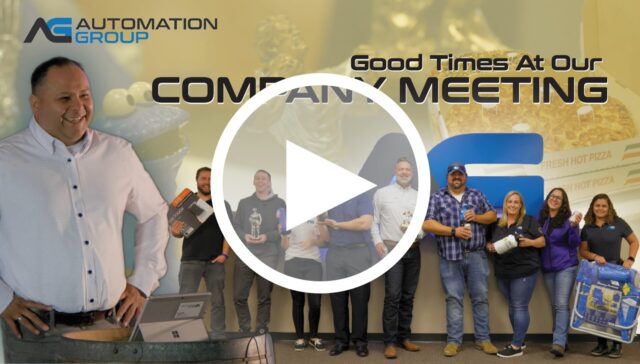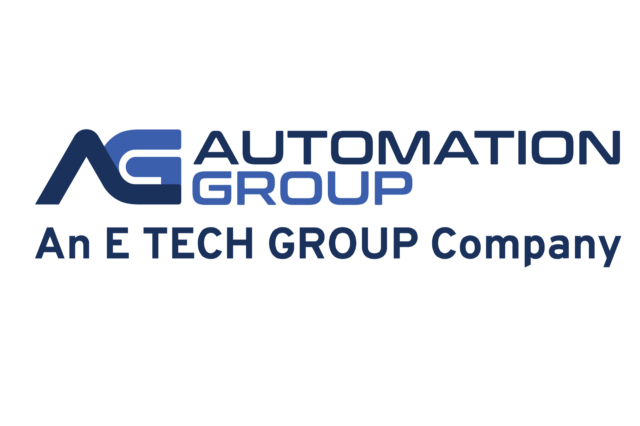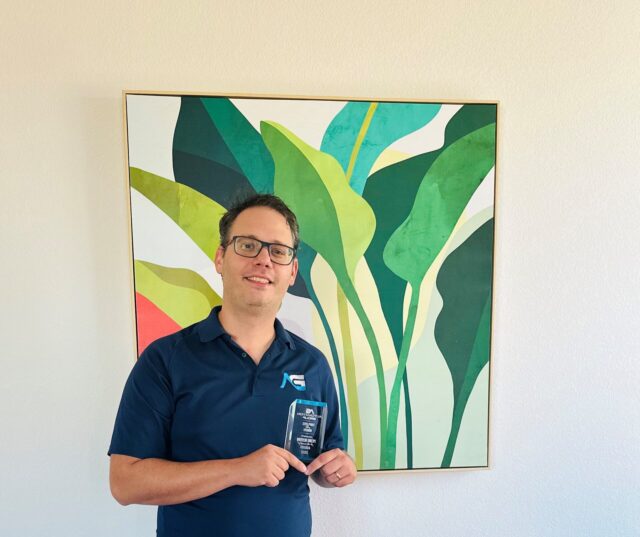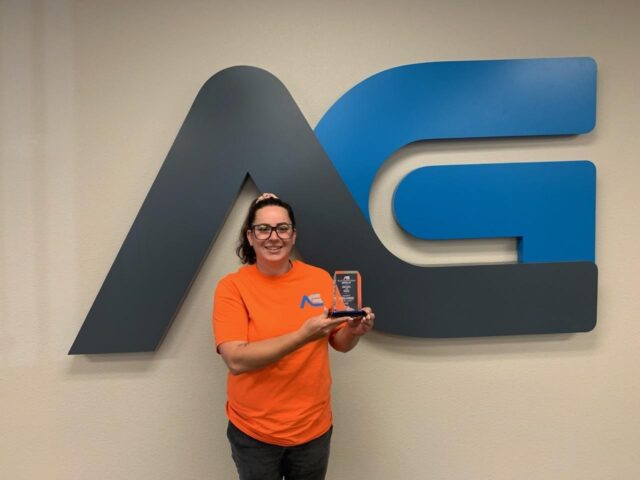Challenge
Fires are a devastating event for any business. It can result in the loss of equipment, inventory, and even the facility itself. The aftermath of a fire can be challenging for any company as it seeks to rebuild and return to business as usual. This case study highlights how Automation Group collaborated with an architectural engineering company to support an international almond supplier after a fire destroyed their roasting line. The project team worked together on a tight schedule to replace and upgrade the almond supplier’s roasting system, leveraging PLC, HMI, networking, and control panel expertise.
Solution
The almond supplier needed to replace their out of commission roasters with a new, modernized system. On the old line, the operators had to walk between two floors to start and monitor production. The customer needed a solution that simplified the almond roasting process while providing more visibility from beginning to end. The first step was forming a strong communication strategy between the customer and the project team. This consisted of daily progress meetings about the project’s developments and potential challenges such as equipment procurement, control panel design, and PLC and HMI programing to control the roasting systems. One of the biggest challenges was the “design-build” method to execute the control panel build. This meant the control panel design had to be open to changes while it was still being built in the shop. The project team relied on their strong collaboration skills to successfully merge these steps to support the tight project timeline.
Automation Group’s principal engineers leveraged their expertise to develop the control modules in CompactLogix PLCs and PanelView Plus HMI for the customer’s various devices as well as configured Moxa managed switches for multi-level network topology. The engineering team also worked closely onsite with electricians to change the control panel design as needed, which included designing auxiliary panels and ordering time sensitive parts for safety and air handling operations. The onsite team also focused on configuring network controls as well as fan VFD motor controllers and burners for the new roasting line. The project manager maintained timely communications with the project team and the customer, securing engineering resources to help with the PLC and HMI code design and managed the team’s progress toward the finish line.
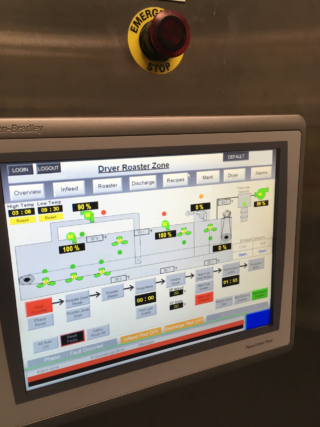
Results
With everything in place, the project team was able to successfully execute the project and trained the customer’s operators and maintenance staff on their new and improved roasting system. The project took about four months to complete from the design phase to site acceptance testing. Rather than walking between two floors to start and monitor the roasting process, the customer’s operators could now start the entire line with the push of a button on the HMI and have production visibility from start to finish. Also, the added controls to the plant network, such as Rockwell Automation’s FactoryTalk AssetCenter, supported the management and protection of the customer’s automation-related asset information. With the project complete, the customer was able to resume production with a more intelligent, modernized roasting line.

